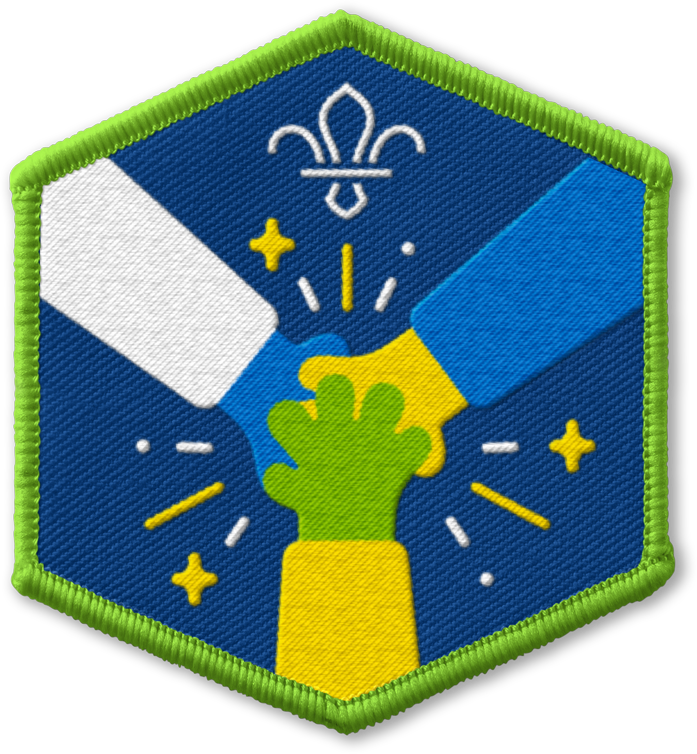
Glow in the dark egg hunt
You’ll need
- Plastic eggs
- LED battery operated tealights
- Torches (1 per person)
- Something to collect the eggs in, such as buckets, hoops baskets or bowls
- A treat or prize for everyone at the end, such as a chocolate treat
Before you begin
- Use the safety checklist to help you plan and risk assess your activity. Additional help to carry out your risk assessment, including examples can be found here. Don’t forget to make sure all young people and adults involved in the activity know how to take part safely.
- Make sure you’ll have enough adult helpers. You may need some parents and carers to help if you’re short on helpers
- Remember, if you’re giving out a food based treat, to check your ingredients against any allergy or dietary requirements to ensure everyone can enjoy the prize.
Setting up the activity
- Place the tealight inside each plastic egg and turn the lights on. Place the eggs around the space you’ll be using for your Easter egg hunt.
- Label the item used to hold the eggs, such as hoops, with numbers, letters or team names for groups to know which to put their found eggs in.
- Choose a safe and suitable location for your egg hunt. You could choose somewhere either inside or outside that’s going to be a bit darker but think about how to be safe if there are any trip hazards and include it on your risk assessment.
Play the game
- Explain to everyone that they’ll be having an Easter egg hunt in the dark, so everyone needs to find the glow in the dark eggs in their team.
- Split everyone into teams and tell them where they need to put the eggs they collect, such as into which labelled hoop, bowl or basket.
- If not already hidden, get the group to play a game, while young leaders or adult volunteers to help hide the eggs around your chosen location.
- Now, tell everyone what the boundaries are and how much time they have to find the eggs in. They could have 10 or 20 minutes, depending on the location and how many eggs there are to find.
- As you’ll be in the dark, check if anyone is worried and explain what to do in an emergency. For example, an adult volunteer could be stationed in a certain area with a torch, so they can be easily found. If anyone doesn’t like the dark, have some torches available, or ask people to bring them to the session.
- Young leaders or adults could use torches and move around the space to make sure everyone is staying safe during the activity.
- When everyone is ready, start the Easter egg hunt and start the timer.
- Remember to keep count of how many eggs there are and their locations, so you know that if or when they’ve all been found.
- After time is up, or after all the eggs have been found, count out how many eggs each team has found. The team with the most eggs is the winner.
- You could then give everyone a treat. It could be an Easter egg, healthy snack or small chocolate treat.
Reflection
This activity gave everyone the opportunity to try something new and have fun. Has anyone done a glow in the dark Easter egg hunt before? Was it easier or more challenging than a standard Easter egg hunt?
This activity was in the dark, which some people might be a bit scared of. How did everyone feel about being in the dark? Was anybody worried? How did you help anyone that was worried? How did it help you build your confidence?
Safety
All activities must be safely managed. You must complete a thorough risk assessment and take appropriate steps to reduce risk. Use the safety checklist to help you plan and risk assess your activity. Always get approval for the activity, and have suitable supervision and an InTouch process.
- Dark
Provide some light, so the environment isn’t completely dark. Everyone must be able to see others and move around the area safely.
- Active games
The game area should be free of hazards. Explain the rules of the game clearly and have a clear way to communicate that the game must stop when needed. Take a look at our guidance on running active games safely.
- To make this easier, you can do this activity in the light to make it a bit easier for everyone to see where the eggs are.
- To make it harder, assign each team a colour of egg, so they can only collect the eggs in their assigned colour.
- To make it easier or harder, give people more or less time to find the eggs. You could also give people clues to help them find certain eggs.
- If anyone doesn’t like the dark, have some torches available or let them work in a pair with someone else to help them.
- Make sure eggs are hidden in different places, at different heights and levels, so everyone can see and get them.
All Scout activities should be inclusive and accessible.


